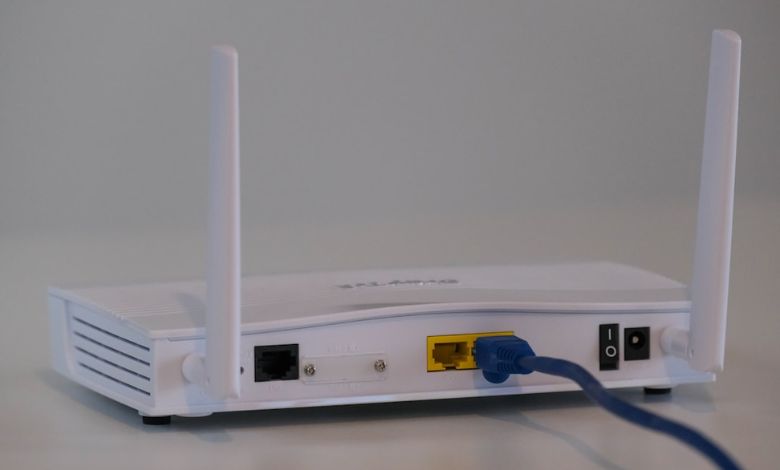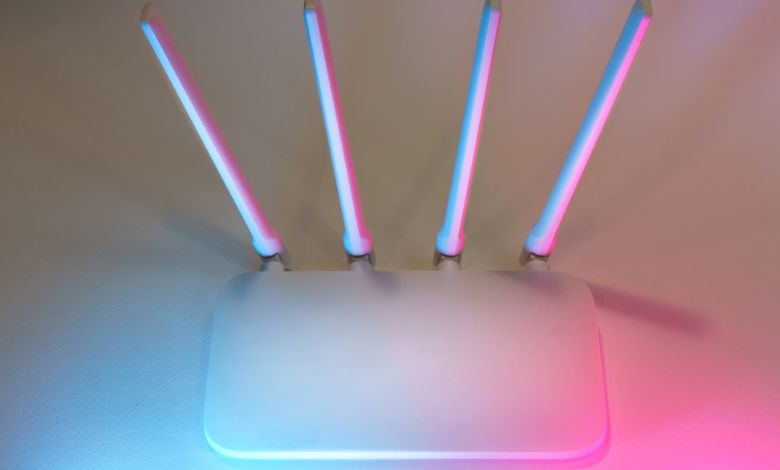What is RHCP in wireless networks? Discover how Right-Hand Circular Polarization optimizes signals for GPS, satellite TV, and more.
Have you ever been annoyed by a weak GPS signal or wondered how satellite TV works so perfectly? You’re definitely not the only one. These technologies might seem like magic, but there’s some really cool science making them possible.
One of the big players behind the scenes is something called RHCP, Right-Hand Circular Polarization. It’s not something you’d hear much about in everyday life, but it’s a game-changer for wireless networks and even impacts internet speed for working from home. So, what exactly is RHCP, why is it important, and how is it shaping the future of wireless tech?
Let’s break it down.
Article Breakdown
What Does RHCP Mean in Wireless Communication?

To understand RHCP, let’s start with the basics of polarization. When we talk about electromagnetic waves, such as those used in wireless communication, polarization describes the orientation of the wave’s electric field. Think of a wave traveling through space, its polarization tells us how it’s “wiggling.”
Right-Hand Circular Polarization, or RHCP, is a specific type of polarization where the electric field rotates in a helical pattern, like a corkscrew, as the wave propagates. Imagine holding a screwdriver and twisting it to the right, that’s RHCP in action. It’s the counterpart to LHCP (Left-Hand Circular Polarization), which twists the opposite way.
Why does this matter? Because the way signals are polarized affects how they travel through the environment, interact with obstacles, and get picked up by receivers. RHCP has unique properties that make it invaluable in certain applications, as we’ll explore below.
How RHCP Enhances Signal Performance
When I first learned about RHCP in my engineering classes, it was like a light bulb went off. Suddenly, those frustrating moments when a wireless signal would drop made sense. Here’s how RHCP helps solve some of those problems:
1. Mitigating Multipath Interference
One of the biggest challenges in wireless communication is multipath interference. This happens when a signal bounces off various surfaces, like buildings, trees, or even the ground, before reaching the receiver. These reflected signals can arrive out of phase, causing distortion.
RHCP minimizes this issue because its circular polarization maintains its unique helical pattern. Reflected signals, which often change their polarization, become less likely to interfere with the original signal. It’s like having a unique key that only fits one lock.
2. Improved Signal Penetration
Another win for RHCP is its ability to penetrate obstacles more effectively than linearly polarized signals. Think about trying to thread a needle with a straight thread versus one that’s spiraling, the spiral motion can navigate twists and turns more easily. This property is especially useful in urban environments with dense obstructions.
3. Compatibility with Moving Receivers
Satellite communications and GPS are prime examples where RHCP shines. When receivers are moving, whether it’s a car, plane, or even a hiker with a GPS device, RHCP ensures consistent signal quality despite the motion. Its circular nature makes it less susceptible to orientation mismatches.
Why RHCP is Essential for Satellite and GPS Networks
If you’ve ever relied on GPS to navigate unfamiliar roads or watched live satellite broadcasts, you’ve benefited from RHCP. Let me share a quick story. A few years ago, I was hiking in a remote area with my GPS device. The trail was winding, and the forest canopy was dense. Despite these challenges, my GPS never faltered. That’s because satellite signals use RHCP to maintain reliability in such environments.
The Science Behind It
Satellites often transmit signals using RHCP because it reduces polarization mismatches. Earth-based receivers designed to pick up RHCP signals can do so effectively, even when the satellite’s orientation changes. This standardization is crucial for ensuring seamless global communication.
Applications
- Navigation: RHCP is why your GPS can guide you through busy city streets or remote mountain trails without losing signal.
- Broadcasting: Satellite TV signals use RHCP to maintain quality, even when weather conditions aren’t ideal.
- Space Communication: RHCP is a staple in communicating with satellites, space probes, and the International Space Station.
Practical Applications of RHCP in Wireless Systems
RHCP isn’t just for satellites. It’s making waves (pun intended) in various wireless systems. Here are some standout examples:
1. Drone Communication
Drones rely heavily on wireless signals for navigation and control. RHCP antennas are often used to ensure stable communication, even when the drone is moving erratically or encountering signal reflections from the ground.
2. IoT and Smart Cities
In smart cities, where devices like traffic sensors and public Wi-Fi nodes communicate constantly, RHCP helps reduce interference and ensures reliable data transmission. It’s the backbone of the interconnected world we’re building.
3. Defense and Aerospace
Military communication systems and aerospace technologies use RHCP for secure, reliable communication in challenging environments. Its ability to resist interference and adapt to dynamic conditions makes it indispensable.
How to Leverage RHCP for Your Needs
If you’re considering RHCP for a project or system, here are some tips to get started:
1. Choose the Right Antenna
Not all antennas are created equal. Look for ones specifically designed for RHCP and ensure they operate within your required frequency range. For example, a helical antenna is a popular choice for RHCP applications.
2. Optimize System Design
When designing a communication system, make sure all components, from transmitters to receivers, are compatible with RHCP. Mixing polarization types can lead to signal loss.
3. Test in Real Environments
Lab tests are great, but real-world conditions can be unpredictable. Test your RHCP-based system in environments similar to where it will be deployed to identify any potential issues.
Key Takings
- RHCP might seem like a niche concept, but its impact on wireless communication is anything but.
- From reducing interference to enabling reliable global communication, it’s a technology that touches our lives in ways we often take for granted.
- As I think back to that hiking trip, I realize how much I owe to the engineers and scientists who developed and refined RHCP.
- It’s not just about signals and waves, it’s about keeping us connected, no matter where we are.
Useful Resources:
- Difference between RHCP and LHCP antenna: This article explains the fundamental workings of RHCP antennas, focusing on the direction of the electric field rotation.
- Left-hand Circular Polarization vs Right-hand Circular Polarization: Explore the various applications of RHCP in wireless systems, including satellite communications and radar systems.
- A broadband dual-polarized antenna for 5G wireless: This resource provides an overview of circular polarization in satellite communication, highlighting its use in modern 5G wireless technology.



